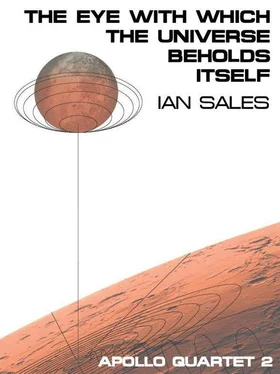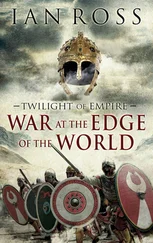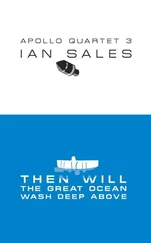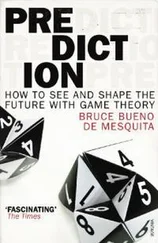Gliese 876A red dwarf star in the constellation of Aquarius located some 15.3 light years from Earth, and formerly known as Ross 780. In 1983, an exploratory mission to the star by the interstellar spacecraft Robert H Goddard discovered four planets: three Jupiters and a Super-Earth. Since the Super-Earth orbited within the star’s habitable zone, it was deemed a suitable location for a scientific station, and the following year a series of prefabricated modules were flown to the exoplanet and parachuted to its surface.
James E WebbThe second interstellar spacecraft built by the USA, and named for the second administrator of NASA, 1961 to 1968, who was seen as the chief architect of the Apollo programme. It uses the Near-Earth Asteroid 3908 Nyx as its anchoring mass, and made its first interstellar flight in 1988 to Barnard’s Star.
L5 Space TelescopeWith the Hubble Space Telescope, launched in late 1986, approaching the end of its usefulness, it was decided its successor should be located at the L5 point alongside Space Station Freedom. Not only would this make it easier to maintain, but also greatly improve its ability to see many more and much older stars and galaxies. Development began in 1993, and the first elements were launched in mid-1998. The telescope, informally known as the L5T, officially went online in early 1999.
Phaeton BaseEarth’s only extrasolar colony, a scientific station on Gliese 876 d, with a population of eighty scientists and support staff. The base comprises a dozen buildings linked by all-weather corridors, a buried nuclear power plant, a launchpad and a rocket assembly building. The base was named for the son of sun god Helios, who drove his father’s chariot and nearly burned the Earth — a reference to Gliese 876 d’s red-lit landscape. The first buildings of Phaeton Base were parachuted from orbit in April 1984, and it has been continually inhabited since that date.
Project SerpoThe codename for a secret programme, based at the S4 facility at Area 51, Nellis Air Force Base, Nevada, which investigated the photographs of the alien disc and its writings, known as the Cydonia Codex, brought back from Mars by Major Bradley E Elliott. Once the writing system had been deciphered, project scientists discovered they had instructions explaining how to manipulate bubbles of quantum spacetime. A working model, powered by antimatter and element 115, was quickly constructed. The complete disappearance of the prototype from its remote underground testing site, as well as a substantial quantity of rock and soil, revealed the true nature of the device: a faster than light engine. Further honing of the theories involved revealed the need for an anchoring mass of at least five gigatonnes. The FTL engine was nicknamed the “Serpo” after the project.
Quantum SuperpositionA fundamental principle of quantum mechanics which holds that a physical system, an electron for example, exists in all its theoretically possible states simultaneously. When measured, however, it only gives a result corresponding to one of those possible configurations.
Robert H GoddardThe first interstellar spacecraft built by the US, and named for the American rocket pioneer, 1882 to 1945. The Robert H Goddard uses as its anchoring mass the asteroid 1862 Apollo, and performed its first flight in 1984 to Proxima Centauri.
S4Also known as Sector-4, S4 is a facility at Area 51, located near Papoose Lake, a dry lake bed, some 10 miles from Groom Lake. All details regarding S4 are classified.
Schrödinger’s CatA thought experiment designed to illustrate what Austrian physicist Erwin Schrödinger saw as a problem with the Copenhagen Interpretation of quantum mechanics. It supposes a cat in a sealed chamber with a radioactive substance and a vial of poison. The radioactive substances has an equal chance of emitting a particle within a set period of time. If a particle is emitted, it triggers a device which releases the poison and so kills the cat. Due to quantum superposition — in this case applied erroneously to the macro level — the cat exists both dead and alive… until it is observed, ie, the sealed chamber is open. The act of observation causes the wave function to collapse and renders the cat either dead or alive, but no longer both.
SerpoThe faster than light engine which allows the Robert H Goddard, James E Webb and Thomas O Paine to travel interstellar distances in short time periods. The first working model was used on the Near-Earth Asteroid 1862 Apollo which thus became the first human interstellar spacecraft, the Robert H Goddard. The Serpo creates a sealed bubble of quantum spacetime about the anchoring mass, and then accelerates the spacetime bubble to speeds greater than the speed of light. Since light within the bubble does not exceed c, general relativity and causality is not violated.
SkylabAfter the departure of the Ares 9 mission for Mars in November 1979, NASA decided to keep what had originally been the flyby spacecraft simulator and was now known as the OWS. It was renamed “Skylab” and from 1980 onwards was kept continually manned. In late 1982, Skylab was boosted to L5 by a S-IVB, ostensibly to improve the usefulness of its recently-fitted space telescope and to act as a base of operations for a mission to a Near-Earth Asteroid. Skylab remained in operation while Space Station Freedom was being built, and it was not until 1988 that the real reason for its move to L5 was admitted.
Space Station FreedomBy 1979 and the launch of the Ares 9 mission, the USSR had put six Salyut space stations in orbit. With the discovery of the Serpo engine, and its requirement for a five million ton anchoring mass, the US found it too needed some form of permanently-manned space presence, preferably one with access to Near-Earth Asteroids. In 1982, Skylab was boosted out to the L5 point, and then in the five years following it was used as a base to build a larger and more permanent space station. Space Station Freedom is currently home to eight NASA astronauts on six-month tours of duty.
Thomas O PaineThe third interstellar spacecraft built by the US, and named for the NASA administrator, 1968 to 1981, who was instrumental in seeing the Ares programme to completion. The Thomas O Paine uses as its anchoring mass the conjoined asteroids 1566 Icarus and 1950 DA. It performed its first flight in 1994 to Epsilon Eridani.
Zond 1 to 3These three launches were unmanned tests of the Zond mission hardware: the N1 launch vehicle, Soyuz 7K-L3 LOK and LK. They did not leave Low Earth Orbit.
Zond 4An unmanned test of the Soyuz 7K-L3 LOK, which saw the spacecraft orbit the Moon and return safely to Earth. Launched 2 March 1968.
Zond 5A repeat of the Zond 4 flight, but this time the spacecraft contained animal specimens — turtles and insects. They were returned safely to Earth. Launched 15 September 1968.
Zond 6A manned test of the Zond spacecraft, with both a Soyuz 7K-L3 Lunniy Orbitalny Korabl and a docked Lunniy Korabl. The mission had been intended to be a world first, putting men in lunar orbit, but Apollo 8 beat the Soviets to it in December 1968. No attempt was made to undock the LK while in orbit about the Moon, and a scheduled EVA to test the procedure by which a cosmonaut transferred from the LOK to the lunar lander was aborted after problems with Filipchenko’s Krechet-94 spacesuit. Crew: Anatoly Vasilyevich Filipchenko and Alexei Stanislavovich Yeliseyev. Launched 21 February 1969.
Zond 7The fourth Soviet lunar mission, and the first to land a man on the surface of the Moon, at Mare Fecunditatis. Crew: Alexei Arkhipovich Leonov and Nikolay Nikolayevich Rukavishnikov. Callsigns: Soyuz 7K-L3 LOK Rodina , LK Zarya . Launched 3 July 1969, landed on Moon 7 July 1969. Duration on lunar surface 25h 9m 17s.
Читать дальше












